Centralized Quality Program To Improve Effectiveness

Quality operations and audits are critical for businesses to ensure that products, processes, and services meet customer expectations and standards. Businesses can incur significant losses and expose themselves to risks if the standards are not met. Ranging from legal problems to customer dissatisfaction, quality operations ensure that they are mitigated.
Most organizations use siloed quality programs specific to the processes. This helps manage large organizations better and utilizes SMEs’ domain expertise in their respective functions. It also has lower dependencies and impacts from operational factors like attrition and skills.
However, the disconnect between quality operations can lead to a complex and inefficient quality management system that can outweigh its benefits. It can lead to dissonance, inconsistencies, and lower effectiveness in multi-disciplinary projects. It also limits the visibility to organizations on overall performance of different departments to senior management on a click.
With modern technology and markets evolving, quality operations also need to evolve. Siloed audit processes may have advantages, but the lack of cost efficiency and methodological inconsistencies make them vulnerable to today’s operations. Organizations need to move to a more centralized approach to enhance the quality management system with better data- availability and controls.
Centralizing Quality Program
The strategy and shift to centralization can be based on objective-oriented activities like:
- Standardize quality processes: Streamline various quality processes like reporting, scoring methodology, sampling methods, how disputes are managed, etc.
- Improve collaborations: Various teams can learn from centralized practices, methodologies, and common tools and technologies. It also improves productivity in multi-disciplinary projects due to improved collaboration.
- Cost-effective optimizations: Various audit processes can be grouped together based on skills (contact centers, Doc review, etc.), domain (origination, servicing, etc.), and build the shared resource pool. Such grouping can support volume spikes and help in managing the audits with fewer resources. The centralized approach will also eliminate repetitive audits in a product cycle contributing to cost savings.
- Customer experience: Enhanced consistency and improved quality practice due to centralized management will help implement real-time audits and correct coaching opportunities to improve customer experience.
- Quality management implementation: The program can look into augmenting quality programs by bringing in process improvements, Poka-Yoke
,and automation of upstream process or audit activities. - Analytics: The evidence collected during quality programs is saved in repositories, which can assist in internal/external audits. The reports and dashboards can be shared with all levels in the organization based on the hierarchy. Analytics also helps accelerate projects by removing non-value adds, avoiding repetitive audits, improving processes, and addressing inconsistencies.
SLK’s Quality Center of Excellence (QCoE) Approach
At SLK Software, our focus in the quality center of excellence is to help our customers enhance the key quality program components like:
- Quality Assurance: By bringing in ideal standards, sampling methods, building checklists, documentation, reports, and insights, we ensure process quality is tracked, managed, and assured.
- Quality Control: By building a repository of errors, errors analysis along with RCA/CAPA for each of the processes, and by feeding to FMEA and SPC matrix, we ensure processes are effective and measured against the possible failure modes.
- Quality Management: Our reports and BI-led insights support managing performance. The quality objectives, checklists, documents, and pieces of evidence are stored in a central location, thereby developing and implementing uniform quality management policies in the organization.
- Quality Improvement: The CoE-led process improvement augments the quality check by statistical analysis and automation of upstream and/or QA processes. We also recommend possible process improvement options to customers to reduce manual efforts and increase quality performance.
Centralizing quality programs can provide numerous benefits, including improved communication and collaboration, reduced costs, and increased quality consistency. It’ll not only help organizations save costs but also lays the groundwork for future evolution and competitiveness.
For any organization, the objective of operations is to deliver the right quality the first time with reduced costs. This requires multi-level optimization throughout the quality processes and organizational management. Once implemented, a streamlined and mature quality program will help in achieving this goal!






